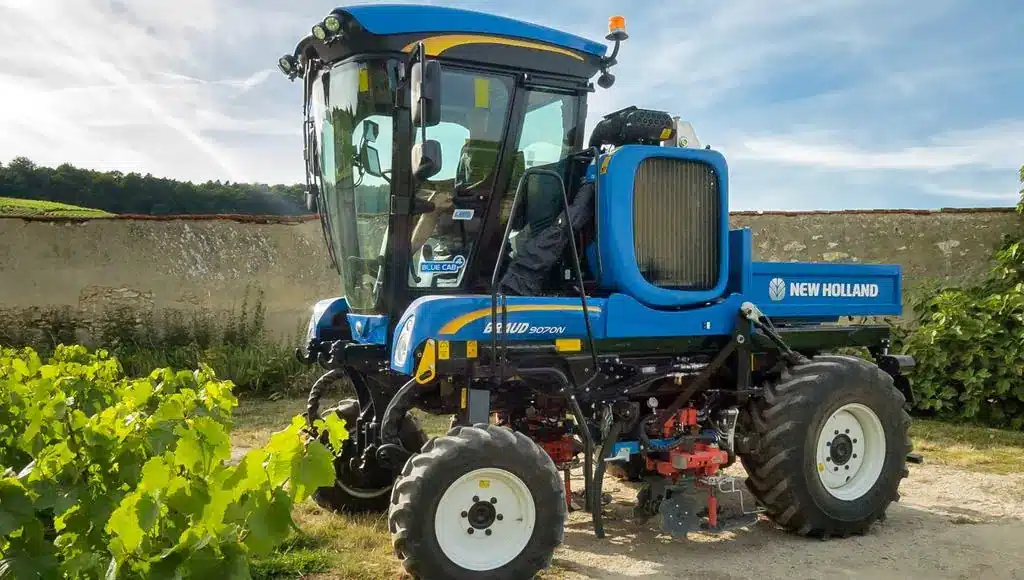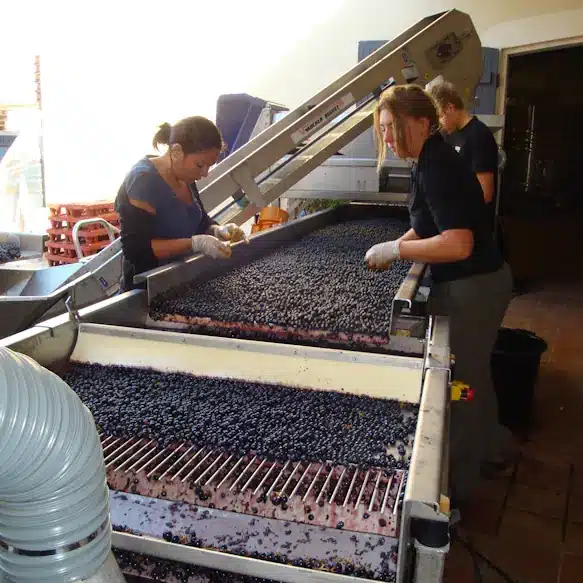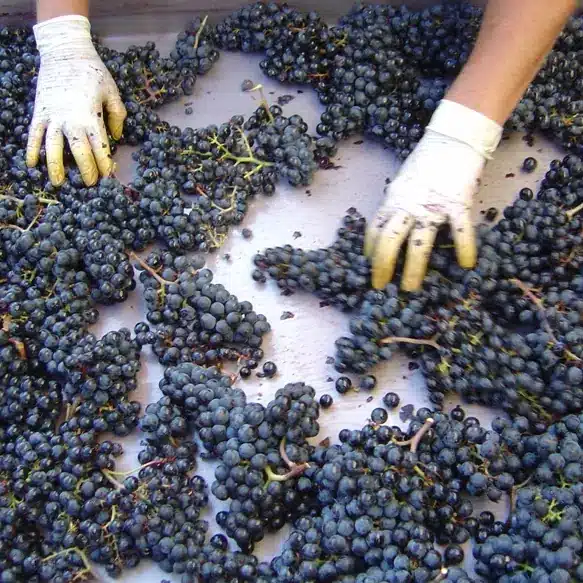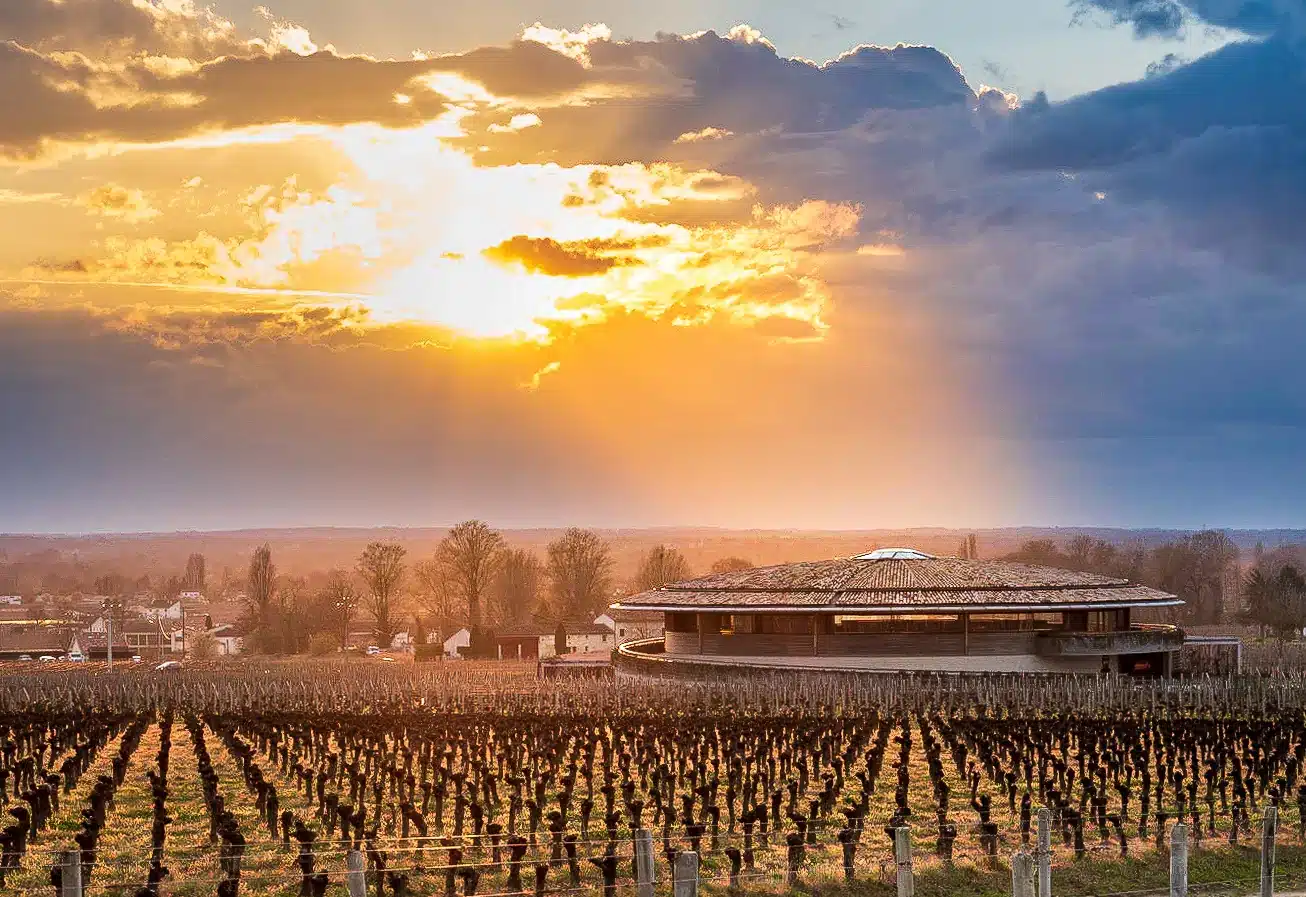This week we have the pleasure of having a guest writer from Chateau Teyssier the renowned Saint Emilion Grand Cru and home of Bordeaux super-brands such as the 100 point “Le Dome,” “Les Asteries” and “Vieux Chateau Mazerat.” Following a few months working in South Africa, Jack Maltus joined our team for a short internship to learn about Bordeaux vineyard transactions and while with us, he wrote this contribution which, despite his youth, draws from an impressive international experience in the vineyard world and more specifically the Bordeaux vineyard world.

1. Is it ready yet?
Typically, in the northern hemisphere red grapes ripen in September. This is a crucial decision-making period when winemakers will go out into the fields and measure the “Brix” (a system of measuring sugar in grapes) of different parcels using what is known as a refractometer. This is a tool whereby by simply crushing grape juice onto it and pointing into the light, the winemaker can see the sugar levels for each parcel in the vineyard. These sugar levels will vary across a vineyard due to slopes, shading/leafage systems and direct sunlight levels as well as the genetics of different grape varieties influencing the time needed before they are ready to harvest. Typically in Bordeaux vineyards, Cabernet Franc will take longer than cabernet sauvignon but anywhere between a reading of 21-23 in France one would be looking to harvest, 22 being the sweet spot. In addition, fine winemakers will crush the grapes in their mouth, including, the pips to get a complete sensation as to ripeness and tannin balance.
Unlike the southern hemisphere where the weather is hotter and predictably similar all year round, countries in the northern hemisphere like France experience wider differences of weather all year round. A winemaker/vigneron must expect differences year-round; in recent years in Bordeaux, winters have been milder, the late spring has brought frost and the summer longer dryer periods which favours the limestone beds beneath the vineyards of Bordeaux. A winemaker needs to be able to account that within those periods, does he/she have enough staff lighting fires to combat the late spring frost, tractor power to combat mildew, and so forth. However, the regions of Pomerol and Saint Emilion, for the first time in their history, have been granted a window to irrigate because of the higher temperatures seen in Europe during the summer of 2022. (Irrigation was technically allowed across vineyards in Europe but it is strictly regulated and was only allowed to a certain extent and in certain circumstances).
2. Picking:
Hail tends to travel down narrow corridors often no more than one or two kilometres wide and from a statistical point of view it is wise to assume a hit once every 10 years or so. Some Bordeaux winegrowers will tell you they have never been hit and while this exists it is the exception not the norm. Therefore, assuming the vineyard has made it through August without being hit by hail and, depending on the quality of the vineyard and the style of wine to produce then it is time to pick. Picking the grapes can be either by hand or using an “enjambeur” as it is called in France.

Generally it is considered that if one produces fine wine, harvesting will be by hand, whereas if one produces larger volumes commercially, harvesting will be via machine. This isn’t a bad idea as the grapes are cut and de stemmed on the spot by the machine where they would then be loaded onto a trailer and taken back to the winery, thus making the process fast and sorting process easier. The risks of fermentation starting in the trailer are reduced (due to the speed) and technology is getting so good now that the harvesting machines are almost if not as good as hand picking. However, this is a machine where due to its size, if handled badly, has the potential to damage a lot of the vines and cannot be used if the vineyard is on a slope.
3. As the grapes come in:
Harvest reception will differ depending on the global vineyard location you are in for example in the southern hemisphere it is common for the grapes to rest for a day in a cool room, this is because the grapes can be too hot. By contrast, in Bordeaux the first process is the sorting, [photo of sorting 1 and 2] this is where people around the sorting table will take out any insects, vegetal material, leaves or rotten bunches of grapes before they are then taken to the de-stemmer.


One new bit of modern tech in the fine wine world of harvesting produced by Delta is called a “Densilys”, this is a machine whereby putting a certain solution of sugar and water, the density of the grape will determine whether it is a quality grape or not; if the grape drops in the solution it will be a grape of quality and it will be taken to the last conveyer to reach the tank, if low quality the grape will rise to the top to be removed.
4. Everyone is different:
However, although simple “the common” process, isn’t always what a winemaker will be looking to create from the wine. Some winemakers are more experimental than others and they may decide to use a portion of whole bunches in the tank which will be done with certain varieties like Shiraz & Grenache. This is to enhance/create certain aromas and flavours; for example with shiraz you will create a warm smoky spice.
The grapes now being in the tank one would procced to do a cold soak which enhances anthocyanin extraction, where the skins lie in the juice for 3-5 days, pre-alcohol formation which allows for more aroma and for an overall better-quality wine. However, one needs to remember that the cold soak needs to be done with a protecting layer of CO2 as the presence of oxygen and heat will allow for the wine to start fermenting on its own so one does need to keep an eye on the temperature of the juice/tank.
